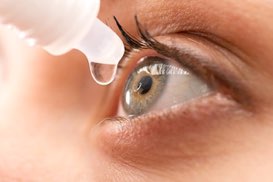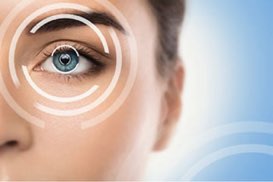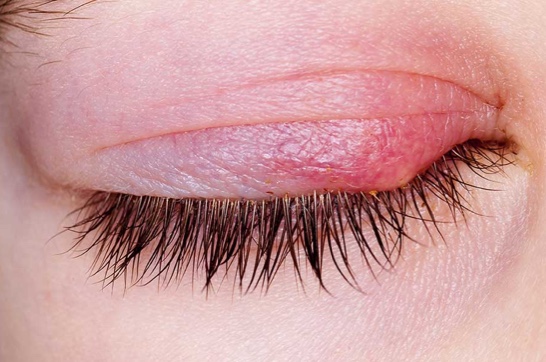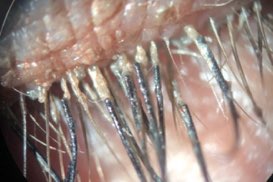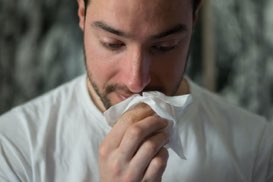After speaking with you, taking your history, examining your eyes, and performing appropriate, targeted diagnostic testing Dr. Muller will discuss your definitive diagnosis, or diagnoses, with you. She will then create a customized treatment plan specifically for you which is based upon your needs.
The first line of therapy is education, environmental and dietary modification, and other holistic recommendations.
Education:
Dr. Muller and her staff place a huge emphasis on education. They spend a lot of time explaining your diagnosis, treatment options, and what you can do to have the healthiest, most comfortable eyes and eyelids, and maintain your best vision, always.
Artificial Tears, Gels, Ointments and Lacriserts:
- Preservative Free Artificial Tears: These products vary in their consistency, some are the consistency of water, while others are thicker, or more viscous. You should begin by using these drops proactively 4 to 8 times each day. These drops can be instilled in your eyes with your contact lenses in.
- Preservative Free Gels: These products are more viscous, or thicker than drops, and therefore stay on the ocular surface longer. The drawback is that they can blur vision, but only slightly and only temporarily (i.e. for one to two minutes). If you are able to tolerate these during daytime hours they are very healthy for your eyes. You should use them proactively throughout the day. If you cannot tolerate minimally blurry vision during daytime hours, you can use them at other times. Gels are also great to use while flying, as the air in airplanes is extremely dry.
- Lacriserts (Hydroxypropyl cellulose ophthalmic inserts): are a prescription “pellet” that you comfortably place in the space between your lower eyelid and your eye. This “pellet” slowly dissolves over many hours offering you continuous preservative free lubrication and moisturization. How to Use Lacriserts
Eyelid Hygiene:
- Twice each day, in the morning and in the evening, you should apply warmth to your closed eyes for 20 minutes. Warmth is best applied using the Wizard Research Electric Heated Dry Eye Mask. Gel packs, heat masks (Optase, Bruder, other) which are heated in a microwave, and washcloths, are not as effective or convenient. This application of heat against your closed eyelids serves to loosen, or soften, the contents of your meibomian glands.
- This application of warmth should be followed immediately by washing your eyelids, either at the sink or in the shower. Washing your eyelids immediately following the application of heat willwash away the contents of your meibomian glands which you have loosened or softened, wash away bacteria that tends to gather at the base of your eyelashes and eyelids, and mechanically milk, or massage your glands to keep their contents flowing. This is best accomplished by closing your eyes and using gentle soap and water to “shampoo” your eyelashes/eyelids for a full minute (which is a very long time with your eyes closed). You can simply use your face soap or bar soap. If you strongly prefer to use a towelette, Optase is Dr. Muller's favorite.
- In person, Dr. Muller and her staff will teach you how to perform "eyelid hygiene" optimally, including massaging the oil secreting glands in your eyelids (meibomian glands). Eyelid Hygiene
EYELID CLEANSING IS ANALOGOUS TO BRUSHING YOUR TEETH
Most of us know that brushing our teeth prevents the accumulation of plaque, and the development of cavities and gum disease. Another part of your daily hygiene should be taking the time to clean your eyelids and eyelashes. Cleaning your eyelids removes debris that can build up over time causing obstruction and loss of your meibomian glands, known as meibomian gland dysfunction (MGD). Prevention of MGD using early detection and intervention is essential to the long-term health and comfort of your eyes.
Anti-Inflammatory Treatments:
The underlying problem with dry eye is ongoing inflammation on the ocular surface. This ongoing inflammation causes long term damage to the surface of your eyes and to your tear producing glands, further reducing tear production over time if not properly treated.
- Corticosteroids: Steroids can be used in the form of eye drops which are available in varying strengths. Steroids are also available in ointment form, usually used at bedtime. Throughout any treatment with steroids, Dr. Muller will monitor your eyes closely and carefully to make certain you don’t have any side effects or complications.
- Topical Cyclosporine-A (Restasis and Cequa): treats dry eye by suppressing inflammation, increasing tear production and by protecting your lacrimal glands (tear glands) from being continuously damaged over time. Restasis.com
- Xiidra (lifitegrast ophthalmic solution 5%): An FDA approved eye drop, taken twice daily, which improves both the signs and symptoms of dry eye. Xiidra.com
- Tacrolimus drops or ointment: have been shown to improve tear stability and the health of the ocular surface. Tacrolimus is also beneficial in the treatment of allergies which effect the eyes.
- Tetracycline/Doxycycline: When prescribed in their full strength/dosages these medications function as antibiotics. When prescribed at lower dosages, this group of medications act as anti-inflammatory agents. Dr. Muller frequently uses these medications, in varying dosages, to treat dry eye, blepharitis, rosacea, meibomitis, styes (hordeola), chalazia, cellulitis, etc. They can be prescribed for days to weeks, or safely used (in lower dosages) for months.
- Azasite (azithromycin ophthalmic solution): is an antibiotic eye drop that also has anti-inflammatory properties. It has been shown to be an effective treatment for both meibomian gland dysfunction and dry eye, relieving the symptoms of both, while enhancing the overall health of the eyes and eyelids.
- Omega-3 fatty acids: Omega-3 fatty acids, ideally from both fish and flaxseed sources, are very healthy. Omega-3 fatty acids have a beneficial effect on dry eye due to their anti-inflammatory properties. They are also essential fatty acids that your eyes, eyelids and tear film need to function their best, be their healthiest and their most comfortable. Unfortunately, our body cannot produce them and most of us don’t get enough Omega-3s from our diet. Omega-3 fatty acids are an important part of any complete dry eye relief program; they also benefit the health of your joints and your heart. Omega 3 Fatty Acids
- Dietary changes to reduce the inflammation in your body if you have food allergies, sensitivities or intolerances. Learn more here
Punctal Plugs, or Tear Augmenters:
- Punctal Plugs are tiny (much smaller than a grain of rice), comfortable, biocompatible inserts that are easily placed in your tear ducts to block tear drainage from the surface of your eyes (i.e. a percentage of your tears are dammed up on your eyes instead of allowing them to run immediately off of your ocular surface). This passively increases the quantity of tears on your eyes, thereby increasing moisture and relieving dry eye. Dr. Muller places an anesthetic eye drop in your eye and then painlessly places a plug into the small openings in the nasal aspect of your eyelids. By performing this simple procedure your eyes immediately benefit from having more tears on the ocular surface, rendering your eyes more moist, more comfortable and healthier. Punctal plugs are readily reversible, and are available in many shapes, sizes and materials. Dr. Muller will educate you regarding which plugs she feels would most benefit you. There are certain circumstances in which Dr. Muller may offer a more permanent solution, namely partial cautery of your punctum (drainage ducts).
N-acetylcysteine (NAC):
- N-acetylcysteine is an acetylated derivative of the natural amino acid, l-cysteine. It has both antioxidant and mucolytic properties. N-acetylcysteine reduces inflammation by modulating the inflammatory process. Topical 5% N-acetylcysteine eye drops have been shown to be effective in treating Meibomian gland dysfunction and dry eye resulting in significant improvement in patients’ symptoms.
Tyrvaya* Nasal Spray:
- Tyrvaya (varenicline solution) is a prescription nasal spray used to treat the signs and symptoms of dry eye.
- Tyrvaya is pronounced "teer-vye-ah".
- Tyrvaya is believed to work by activating the trigeminal parasympathetic pathway via the nose, resulting in increased tear production, i.e. by stimulating nerve endings in your nose, Tyrvaya triggers increased tear production.
- Tyrvaya is to be used twice a day, approximately 12 hours apart.
- The most common side effects of Tyrvaya can be sneezing, cough, throat and/or nose irritation.
*IT'S VERY IMPORTANT THAT YOU VIEW THIS VIDEO REGARDING HOW TO PROPERLY USE TYRVAYA:
Patient Resources | Tyrvaya® (varenicline solution) Nasal Spray (tyrvaya-pro.com)
Autologous Serum Eye Drops:
- Autologous Serum Eye Drops: These are special eye drops which are custom made for you taking advantage of the natural growth factors, immunoglobulins, vitamins and other essential components present in your own blood. Dr. Muller will arrange for you to have your blood drawn (as if you were donating blood). Your blood will then be spun down using a centrifuge and the plasma rich liquid on the top will be made into eye drops for you. Autologous serum eye drops have been shown to decrease inflammation and scarring, promote healing and repair, enhance vision, and increase the health and comfort of the eyes.
Secretagogues:
- Secretagogues: Cevimeline and Pilocarpine are medications taken orally to increase tear and saliva production. They are FDA approved for the treatment of dry mouth. By increasing secretions elsewhere in the body, they also improve dryness of the eyes, skin, nose and vagina (treatment of these conditions is considered an off label use of these medications).
Amniotic Membranes:
- Amniotic membranes are therapeutic biologic corneal bandages (similar to contact lenses) used to enhance and facilitate healing for the treatment of dry eye and other ocular conditions. The corneal bandage lenses are composed of amniotic membrane (placental tissue). The natural therapeutic properties of these amniotic membranes help to reduce inflammation, pain and scarring, enhance comfort and vision, and promote and expedite healing. Dr. Muller gently and painlessly places the amniotic membrane on your eye in her office; you wear the amniotic corneal bandage for a couple of days. Amniotic membranes have received FDA clearance for wound healing and continue to significantly benefit Dr. Muller's dry eye patients. In-Office Use of Amniotic Membrane
Manuka Honey – Optimel brand:
Manuka honey has both natural antibiotic and anti-inflammatory properties. Dr. Muller is always looking for natural ways to treat ocular inflammation (i.e., dry eye, meibomian gland dysfunction, blepharitis, ocular rosacea). Since these conditions are chronic Dr. Muller would rather lean on natural treatments rather than medications.
Dr. Muller recommends Manuka honey in two forms: drops and gel.
Manuka honey eye drops consist of 16.5% honey and contain a food preservative (Benzoic acid). We recommend our patients use these drops four times each day.
Manuka honey gel consists of 98% honey and are preservative free. We recommend our patients apply the gel to their eyelids one to two times each day.
Manuka honey products can sting or burn. The stinging/burning can last for seconds or minutes. This usually dissipates over time.
Muro-128 Eye Drops and Ophthalmic Ointment:
The surface of our eyes are covered with transparent skin known as epithelium. Muro works by strengthening this skin as well as by decreasing any swelling of the cornea (the clear dome on the front of the eye).
Compounded Ophthalmic Drops and Ointments:
Dr. Muller works closely with several compounding pharmacies to have medications which are not commercially available compounded. These compounded medications, both in the form of eye drops and ointments, can be extremely helpful in treating dry eye, blepharitis, meibomian gland dysfunction, ocular rosacea, etc. Some examples of the medications we have compounded for our patients include:
- Tacrolimus ophthalmic drops and ointment
- Naltrexone tablets
- N-acetylcysteine ophthalmic drops
- Spironolactone ophthalmic drops
We can also have preservative free versions of commercially available eye drops compounded for people who are sensitive or allergic to preservatives. Some examples include: Tobramycin, Timolol, Loteprednol, Dexamethasone, Erythromycin, Ketorolac, Cyclosporine, Ecothiophate, Pilocarpine, and Bimatoprost.
Treatment of Meibomian Gland Dysfunction (MGD):
- Natural/Holistic treatment
- Prescription Medications
- Mechanical Treatments:
- Blepharoexfoliation using a Golf Club Spud Debridement-Scaling procedure
- Microblepharoexfoliation (MBE) using BlephEx
- iLux
- LipiFlow
- Probing of Meibomian glands
Learn more here: MGD
Dr. Muller Recommends:
The use of a Nanodropper Adaptor on your eyedrops to reduce the eyedrop volume released each time you use your eyedrops. This reduces cost, waste, and the mess of excess drops running down your face. https://nanodropper.com/
Prose and Scleral Contact Lenses:
Boston Sight Prose is a customized prosthetic device created for people with severe dry eye (and several other eye conditions). It is intended to replace, or support, impaired ocular surfaces with the goal of improving vision and comfort. It was FDA approved in 1994.
Scleral contact lenses are rigid gas permeable lenses which are both vaulted and have a larger diameter than standard contact lenses. People with dry eye can be helped by the special design of these lenses in the following ways:
- The vaulting leaves a gap between the scleral contact lens and the cornea thereby protecting the cornea from having the contact lens touch it. The vaulting also creates a fluid reservoir that bathes the cornea.
- The wider diameter of a scleral contact lens allows the scleral contact lens to touch the sclera (the white part of the eye) as opposed to mechanically touching the cornea, as standard contact lenses do. Scleral contact lenses must be custom fit. They are most often used to address corneal irregularities, astigmatism, and keratoconus. Scleral contact lenses can also provide symptomatic relief for people with severe dry eye.
Humidifiers:
- Using a humidifier when you’re traveling, on your desk at home or at work, and at your bedside is of great benefit. This is especially true if you travel to dry environments, high altitudes, in the fall and the winter when the ambient air is dry, and when the heat and air conditioning are on.
Hydration:
- Staying well hydrated is extremely important. Drinking 7 to 8 eight ounce glasses of water each day, or drinking enough water until your urine is straw colored, is ideal.
Sleep and Hydrating Nighttime Masks:
- Being well rested is imperative to your overall health and the health of your eyes. Getting 7 to 8 hours of sleep each night is recommended. Nighttime eye shields can protect your eyes while you sleep. These are especially helpful if you sleep with your eyes partially, or intermittently open, or if you sleep with a ceiling fan, a regular fan, near a vent, or with a C-pap machine. (Nighttime Dry Eye Relief)
Treating Other Eye Conditions:
- It is extremely important to diagnose and properly treat all sources of inflammation and irritation of your eyes and eyelids. Other conditions that can exacerbate dry eye and make it much more difficult to treat include blepharitis, meibomian gland dysfunction, ocular rosacea, demodex, environmental allergies, food allergies, sensitivities and intolerances, styes, chalazia, other.
Limiting Medications Which Exacerbate Dry Eye:
- Minimizing, or completely eliminating, medications that exacerbate dry eye is extremely helpful.
Decreasing Contact Lens Wear:
- The healthiest way to wear contact lenses is to simply wear them for going out socially, playing sports and exercising. Wearing eyeglasses to work is much healthier for your eyes since most people are sitting at a desk reading their computer screen(s) and/or documents the greater part of the day.
Good Looking Wrap Around Glasses/Sunglasses:
-
- Wrap around glasses and sunglasses are a great way to decrease dry eye and allergy symptoms by protecting your eyes from environmental elements such as wind, UV, and allergens. Now available in many styles and fits. They can be ordered with or without a prescription, and as clear, photochromic, polycarbonate or polarized lenses.
- https://www.zienaeyewear.com/
- https://7eye.com/

